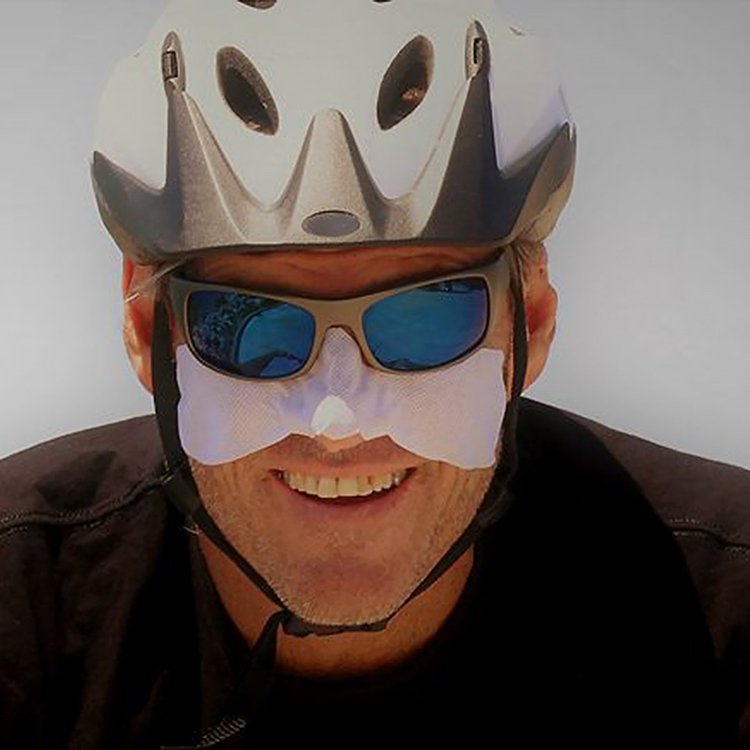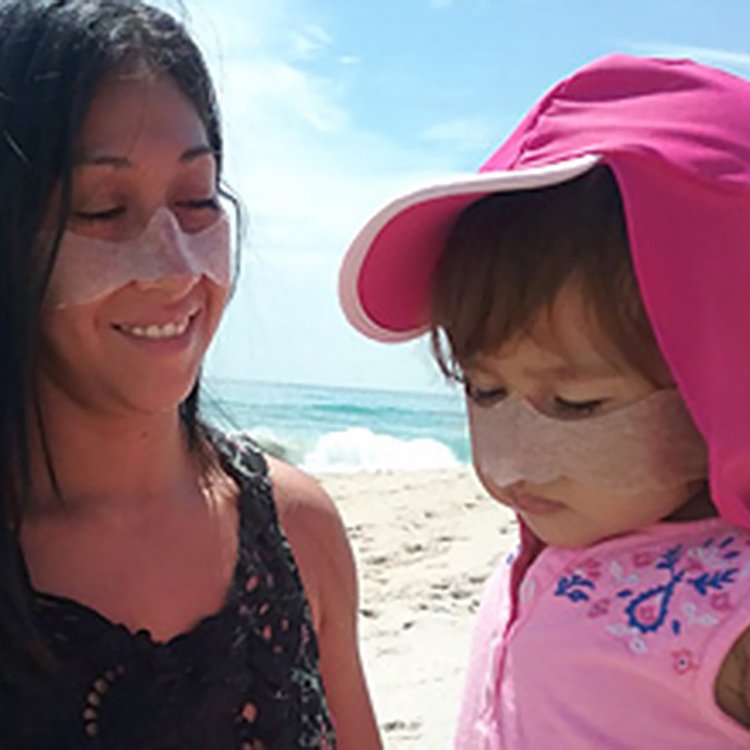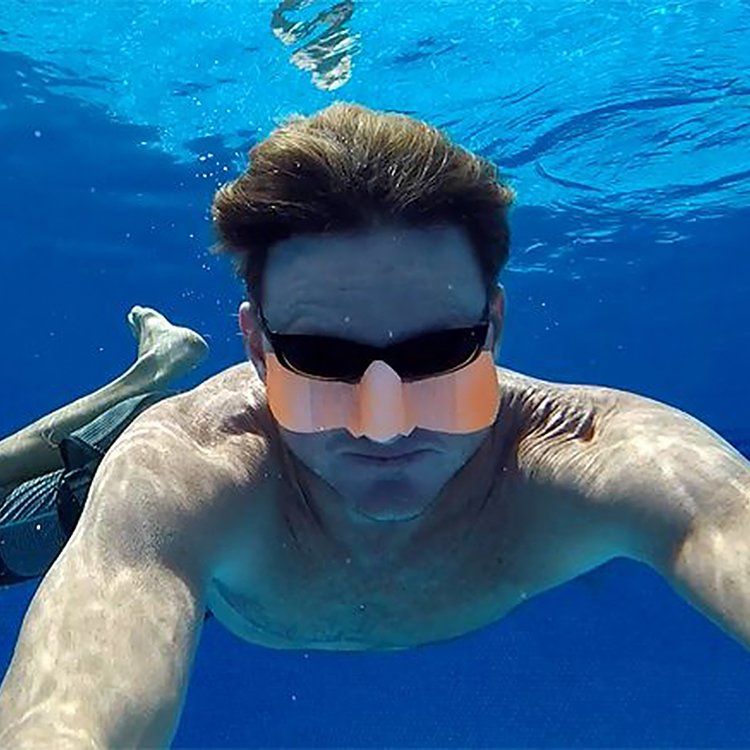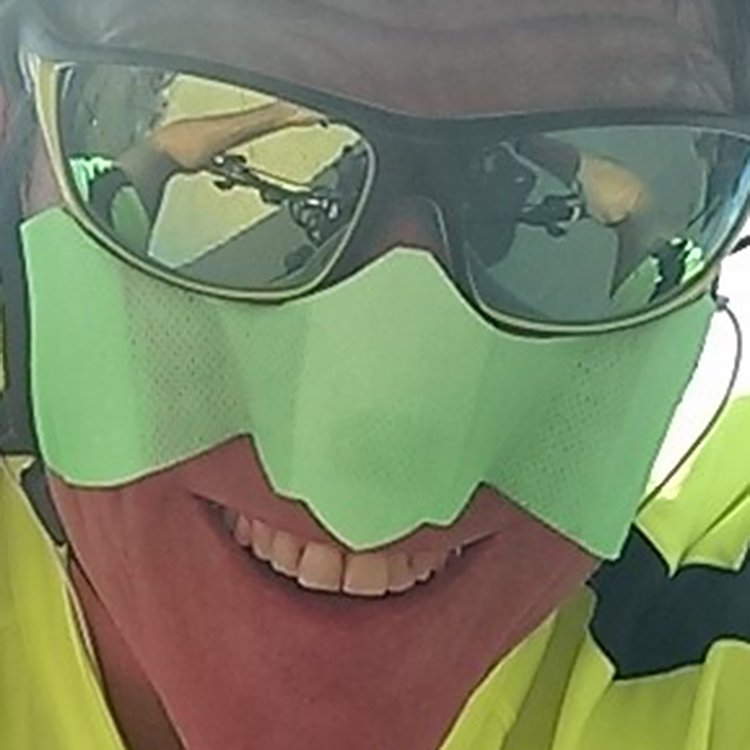Adhesive Sunblock Bandages

THE BEST WAY TO BATTLE SKIN CANCER CAUSED FROM EXPOSURE TO THE HARMFUL RAYS OF THE SUN IS TO PREVENT IT.
Welcome to our site. The most effective way to prevent skin cancer from exposure to the harmful rays of the sun is to cover up. Insulate your skin from the sun.
The more layers of clothing, the better your protection. Hats, hoodies, long-sleeves-long pants, sun-glasses, and our new game-changing adhesive sunscreen: Face-Aid.
Adhesive Sunblock Bandages

THE BEST WAY TO BATTLE SKIN CANCER CAUSED FROM EXPOSURE TO THE HARMFUL RAYS OF THE SUN IS TO PREVENT IT.
Welcome to our site. The most effective way to prevent skin cancer from exposure to the harmful rays of the sun is to cover up. Insulate your skin from the sun.
The more layers of clothing, the better your protection. Hats, hoodies, long-sleeves-long pants, sun-glasses, and our new game-changing adhesive sunscreen: Face-Aid.
Choose To Cover
In 2014, one day before surfing, I was whining about a pimple on my forehead. My significant other tells me to put a Band-Aid over it and watch it disappear. I was not buying her remedy but reluctantly put one on. For two days straight, I surfed perfect perfect waves sunrise to sunset under the blazing Costa Rican sun. I wore hats, hoodies, sunglasses, and plenty of the best sunscreen on the planet to protect my skin from the sun. Finally, I stop surfing and peer into a mirror. My face was sun-burnt toast. Then I remembered the Band-Aid from two days earlier, and GUESS WHAT HAPPENED when I peeled it off. Not one sign of exposure to the sun, 100% sunblock. 💡💡 After days of searching the web for any product offering adhesive sunblock (and a short trip to the patent attorney), Face-Aid was born.
We are just getting started with our lifelong commitment to COVERING UP.
Our goal at Face-Aid is to make the world a better place one day of sunshine at a time.
Thank you,
Donald Long
Choose To Cover
In 2014, one day before surfing, I was whining about a pimple on my forehead. My significant other tells me to put a Band-Aid over it and watch it disappear. I was not buying her remedy but reluctantly put one on. For two days straight, I surfed perfect perfect waves sunrise to sunset under the blazing Costa Rican sun. I wore hats, hoodies, sunglasses, and plenty of the best sunscreen on the planet to protect my skin from the sun. Finally, I stop surfing and peer into a mirror. My face was sun-burnt toast. Then I remembered the Band-Aid from two days earlier, and GUESS WHAT HAPPENED when I peeled it off. Not one sign of exposure to the sun, 100% sunblock. 💡💡 After days of searching the web for any product offering adhesive sunblock (and a short trip to the patent attorney), Face-Aid was born.
We are just getting started with our lifelong commitment to COVERING UP.
Our goal at Face-Aid is to make the world a better place one day of sunshine at a time.
Thank you,
Donald Long
Our Covers
For more detailed information on our covers, please click on their corresponding links below.
Hey Moms and Dads!
Not all sun protection comes in a bottle. There are lots of ways to protect your child’s skin all year long. Here are a few you can try.
Hide and Seek. UV rays are strongest and most harmful during midday – 10am to 3pm. Hide and Seek shade under a tree, an umbrella or a pop-up tent. Use these options to prevent sunburn, not to seek relief after it’s happened.
Cover ‘em Up. Cover ‘em Up. Cover ‘em Up. Clothing that covers your child’s skin helps protect against UV rays. The internet is packed full of colorful choices to protect your child with hoodies, long sleeve tops, hats and shoes made with lightweight material and a handy UPF rating on the label.
Get a Hat. Hats that shade the face, scalp, ears, and neck are easy to use and give great protection. Baseball caps are popular among the young ones, but they don’t protect their ears and neck. If your child chooses a cap, be sure to look for the ones with extra flaps for ears and neck.
Research shows most freckles caused from the sun on children’s faces are around the nose and eyes. Choose to cover!
Hey Moms and Dads!
Not all sun protection comes in a bottle. There are lots of ways to protect your child’s skin all year long. Here are a few you can try.
Hide and Seek. UV rays are strongest and most harmful during midday – 10am to 3pm. Hide and Seek shade under a tree, an umbrella or a pop-up tent. Use these options to prevent sunburn, not to seek relief after it’s happened.
Cover ‘em Up. Cover ‘em Up. Cover ‘em Up. Clothing that covers your child’s skin helps protect against UV rays. The internet is packed full of colorful choices to protect your child with hoodies, long sleeve tops, hats and shoes made with lightweight material and a handy UPF rating on the label.
Get a Hat. Hats that shade the face, scalp, ears, and neck are easy to use and give great protection. Baseball caps are popular among the young ones, but they don’t protect their ears and neck. If your child chooses a cap, be sure to look for the ones with extra flaps for ears and neck.
Research shows most freckles caused from the sun on children’s faces are around the nose and eyes. Choose to cover!

Directions and Applications
Wash your skin normally. Dry your skin to be sure there are no oils or lotions remaining.
Peel off protective paper layer from back of Face-Aid shield. Center middle of shield over center of nose and work down both sides smoothing out any wrinkles. Adjust if necessary. Do not stretch tightly. Gently press down edges. If necessary to adjust adhesion factor, you can apply Face Aid shield on a dry t-shirt or forearm once or twice to lessen the adhesion factor. Just stick it on one time and remove it.
To remove, slowly lift outside edge and gently pull sideways to remove. If you have ever removed a Band-Aid, this process is similar. Wash face with soap and water. For external use only. Do not use on irritated or sun-burnt skin. Do not cover cuts or sores with this product. Do not leave on skin for more than 8 hours per day. If a rash or skin irritation occurs, discontinue use immediately. Not to be used on sensitive skin or children under three years of age. Sunburn and overexposure to the sun is a serious medical condition requiring accurate diagnosis and proper care. If you suspect these problems, call your physician immediately.
Caution: Do not apply to sensitive skin near eyes, and do not use this product if you are allergic to adhesives.
Directions and Applications
Wash your skin normally. Dry your skin to be sure there are no oils or lotions remaining.
Peel off protective paper layer from back of Face-Aid shield. Center middle of shield over center of nose and work down both sides smoothing out any wrinkles. Adjust if necessary. Do not stretch tightly. Gently press down edges. If necessary to adjust adhesion factor, you can apply Face Aid shield on a dry t-shirt or forearm once or twice to lessen the adhesion factor. Just stick it on one time and remove it.
To remove, slowly lift outside edge and gently pull sideways to remove. If you have ever removed a Band-Aid, this process is similar. Wash face with soap and water. For external use only. Do not use on irritated or sun-burnt skin. Do not cover cuts or sores with this product. Do not leave on skin for more than 8 hours per day. If a rash or skin irritation occurs, discontinue use immediately. Not to be used on sensitive skin or children under three years of age. Sunburn and overexposure to the sun is a serious medical condition requiring accurate diagnosis and proper care. If you suspect these problems, call your physician immediately.
Caution: Do not apply to sensitive skin near eyes, and do not use this product if you are allergic to adhesives.

Dermatology
Sunscreen use has risen in past decades, as media outlets and doctors tout the benefits of sunscreen for protecting against skin cancer and sunburn. The problem with this billion dollar a year market: not all sunscreens are created equal – and in many cases, sunscreen is harmful, not helpful. The state of Hawaii has banned sunscreens containing oxybenzone from be sold or distributed on all islands. The state of California is the only state that allows sunscreen in public schools.
Here’s why: There are two ways that a sunscreen can protect the skin from sun damage: with a mineral barrier or a chemical one. Mineral sunscreens typically include ingredients like zinc oxide or titanium dioxide, which create a physical barrier to protect the skin from the sun. Chemical Sunscreens… Chemical sunscreens use one or more chemicals including oxybenzone, avobenzone, octisalate, octocrylene, homosalate, and octinoxate. A good safety rule for any health-conscious individual is that if you can’t eat it, you shouldn’t put it on your skin. However, these sunscreen chemicals raise some special concerns because they can cross into skin and other tissue.
Knowing these risks, it is important to ask questions such as: Will this cross the skin and get into other tissue in my body? Does this chemical have the potential to disrupt hormones, especially in children? Are there long-term or allergy reactions to these chemicals? New research by the Environmental Working Group reveals that the chemicals commonly used in sunscreen are endocrine disruptors, estrogenic and may interfere with thyroid and other hormone processes in the body. The most common sunscreen chemical, Oxybenzone, was found in 96% of the population by a recent study by the Center for Disease Control and Prevention. This is especially alarming since oxybenzone is considered an endocrine disruptor, can reduce sperm count in men and may contribute to endometriosis in women. The EWG warns against using oxybenzone, especially on children or pregnant/breastfeeding women.
Dermatology
Sunscreen use has risen in past decades, as media outlets and doctors tout the benefits of sunscreen for protecting against skin cancer and sunburn. The problem with this billion dollar a year market: not all sunscreens are created equal – and in many cases, sunscreen is harmful, not helpful. The state of Hawaii has banned sunscreens containing oxybenzone from be sold or distributed on all islands. The state of California is the only state that allows sunscreen in public schools.
Here’s why: There are two ways that a sunscreen can protect the skin from sun damage: with a mineral barrier or a chemical one. Mineral sunscreens typically include ingredients like zinc oxide or titanium dioxide, which create a physical barrier to protect the skin from the sun. Chemical Sunscreens… Chemical sunscreens use one or more chemicals including oxybenzone, avobenzone, octisalate, octocrylene, homosalate, and octinoxate. A good safety rule for any health-conscious individual is that if you can’t eat it, you shouldn’t put it on your skin. However, these sunscreen chemicals raise some special concerns because they can cross into skin and other tissue.
Knowing these risks, it is important to ask questions such as: Will this cross the skin and get into other tissue in my body? Does this chemical have the potential to disrupt hormones, especially in children? Are there long-term or allergy reactions to these chemicals? New research by the Environmental Working Group reveals that the chemicals commonly used in sunscreen are endocrine disruptors, estrogenic and may interfere with thyroid and other hormone processes in the body. The most common sunscreen chemical, Oxybenzone, was found in 96% of the population by a recent study by the Center for Disease Control and Prevention. This is especially alarming since oxybenzone is considered an endocrine disruptor, can reduce sperm count in men and may contribute to endometriosis in women. The EWG warns against using oxybenzone, especially on children or pregnant/breastfeeding women.
Additional Facts: The adhesives on the Face-Aid strips are “pressure sensitive”. This means that they are designed to adhere best when gentle, but firm finger or hand pressure is applied. Skin has hills and valleys. Just laying a piece of tape on the skin only gives you contact with the top of the hills. Gentle, but firm strokes along the tape allows the adhesive to contact with more of the skin surface. This will increase initial adhesion and decrease the risk of “rolling” or losing your outer layer to friction. Usually, the tackier or stickier the tape, the less pressure is needed.
Stays on strong wet or sweat – Tear free – Comfortable to wear – Quick and easy application – Fit for all outdoor recreational activities – Hypoallergenic – Latex free – Designed to help reduce mess and waste, while offering a fast, efficient and total sun protection – High performance, durable protection – Fragrance-free, oil-free, dye-free – Dermatologist tested – Available in adult, teen, and child sizes




